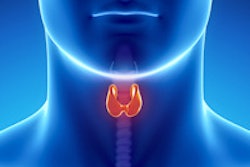Reflecting the growing demand for point-of-care ultrasound technology, emerging clinical applications contributed to more than one-fifth of the $3.66 billion U.S. (3.25 billion euro) global ultrasound market in 2014, according to a report by market research firm Frost & Sullivan.
Conventional ultrasound clinical applications such as radiology, cardiology, and ob/gyn still make up 78% of the market, but they are being outstripped by emerging clinical segments in North America, Latin America, and Western Europe, according to the firm. Sales of premium ultrasound systems in these areas are limited by market saturation, and refurbished systems are also cannibalizing sales of new and advanced equipment, Frost & Sullivan said. In addition, budgetary constraints, inadequate technical resources, and lack of reimbursement for ultrasound procedures are hindering widespread adoption.
Meanwhile, demand for point-of-care ultrasound is being driven by greater awareness of the harmful effects of radiation exposure in other imaging modalities and the ability to provide additional care at the patient site, Frost & Sullivan Research Analyst Srikanth Kompalli said in a statement.
Frost & Sullivan noted that ultrasound vendors are producing more mobile systems with real-time and volume imaging capabilities, as well as 3D and 4D transducers. These technologies will address the diagnostic and image guidance needs of interventional procedures; in the future, ultrasound is expected to find substantial adoption in dermatology, breast imaging, and therapeutic applications, according to the company.
On a geographic basis, the U.S., Brazil, Germany, France, Spain, Italy, the U.K., and India make up nearly 75% of total ultrasound revenue and market volume, according to Frost & Sullivan. Cart-based and portable (laptop) ultrasound equipment combine for 87% of units sold and 97.5% of revenue.
Thanks to improving functionality, performance, and affordability, the sales of portable and ultraportable ultrasound systems are expected to exceed those of cart-based ultrasound systems by 2019, driven by demand in clinical segments such as emergency care, anesthesia and pain management, musculoskeletal applications, primary care, ob/gyn, and general imaging radiology, Kompalli said.



















